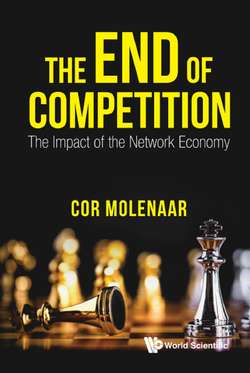Читать книгу End Of Competition, The: The Impact Of The Network Economy - C N A Molenaar - Страница 20
На сайте Литреса книга снята с продажи.
Shouldn’t Investments be Made with a Long-Term Vision?
ОглавлениеTraditional companies are mature, often having grown during the second and third industrial age, whereby ownership, control, independence and supply chains were important. If these companies are taken over, it is often due to profit and returns. Private equity groups want to make the companies more efficient and effective, and then sell them off entirely or piecemeal, at a profit.
In some cases, the company profits are reinvested if this leads to an increase in value (therefore higher returns in the sale). Sometimes the company profits are creamed off by charging the investment to the company, which then has to pay interest on this (or perhaps even pay off this debt). Whatever the case may be, these investors use their expertise to realise a return on their investment through greater efficiency and increased value. If the scope to realise this is longer than four years, these investors start to feel uneasy as they would prefer to invest in new promising objects, anywhere in the world.
The investors involved in the new start-ups are not interested in shortterm profits. They believe in the great opportunities for growth of these companies and are convinced that a long-term investment would provide better results. What’s more, they are often investors who have already made an investment and successfully divested it (often through a stock market flotation, a so-called IPO). As a result, they have substantial investment portfolios. Quickly selling the company again (with profit) would only lead to the problem of looking for another promising project. Staying put and growing along with the traditional project is therefore a better option. These new entrants have a longer term commitment and vision, which results in more stable and lasting growth. At investment level, there is a conflict between the traditional companies that are focused more on profits and the new companies that are looking to increase value (through growth). The new investors are focused more on the long-term effects. What’s more, the new companies only have a short history and limited ‘legacy’, as a result of which they can straightaway use the latest technologies. The management are creative, flexible and often young leaders who respond more quickly and in an unorthodox manner to the market conditions and buying behaviour. The growth of these new companies is partly at the expense of the more traditional companies. This is typically a friction in a transformation period (from the Third to the Fourth Industrial Revolution).
Many start-ups have emerged in America. The conditions for this were clear and were as follows:
• a concentrated area where the developments took place (Silicon Valley); this provided a concentrated supply of good personnel, as well as a concentration of investors who were keen on investing in new technological companies based on a long-term vision;
• a large home market that enabled testing among a relatively large group, thereby not risking any further damage in the market should the start-up fail;
• a good business climate where success is appreciated and failure (bankruptcy) is accepted;
• a competitive business climate.
On top of this, America had come out of the Second World War unscathed. The war production actually helped to initiate strong economic growth, making America the world leader. As a result, it gained a head start on many other countries that had to build up their economies once more and where spending power of companies and families had to return once again.
